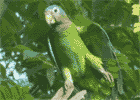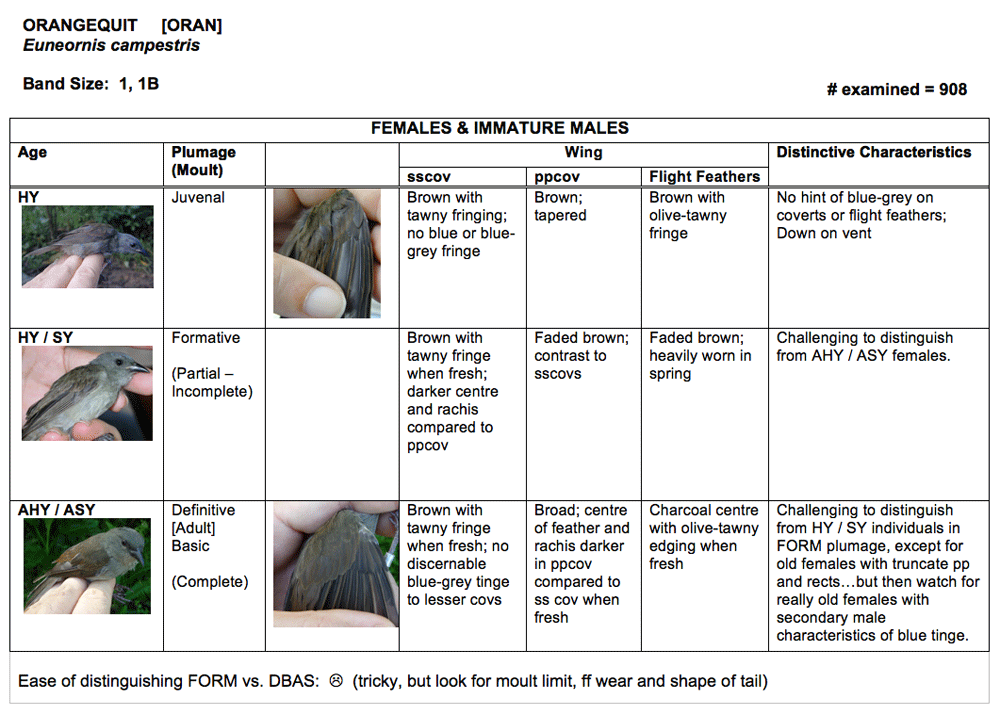 |
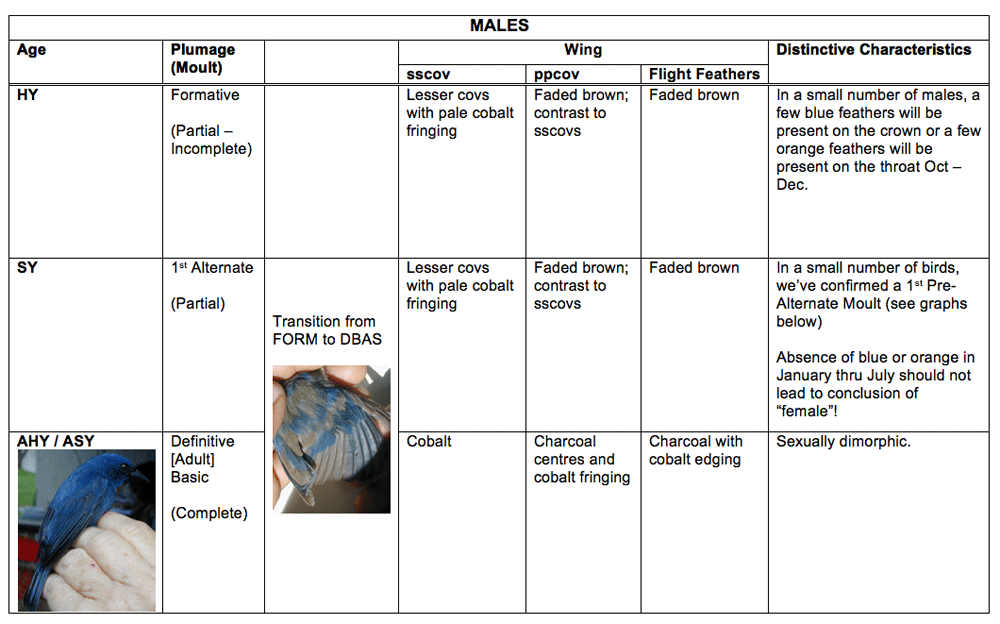 |
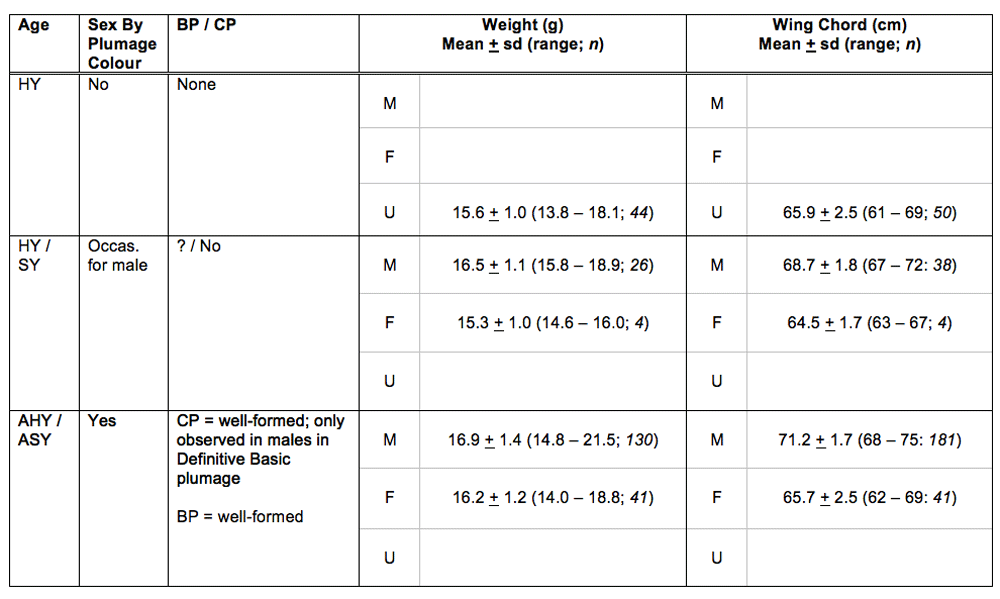 |
“Brown” Orangequits are a challenge: this is one of those species in which "the young male looks like the young female looks the adult female”.
After looking at more than 900 ORAN, we still urge a lot of caution in ageing and sexing the brown ones.
Juvenal flight feathers of males and females are brown, with absolutely no hint of blue-grey whatsoever. Particularly of note, there is no blue-grey tinge to the lesser coverts. Feather shape of primary coverts and tail is narrow and tapered. With the 1st Pre-Formative Moult, head feathers take on a grey-blue tinge and a moult limit is most noticeable between the greater covs (darker shaft and feather centres) and primary coverts (faded brown shaft and feather). In adult females, there is no moult limit between the secondary and primary coverts when fresh and the primary covert shape is broad. Early in the calendar year, some Second-Year males commence a 1st Pre-Alternate Moult, so look for the earliest appearance of orange on the throat and blue on the head.
Sexing of adults by wing chord appears possible with WC < 67 = female; WC > 69 = male….but first you need to be sure the primaries are, indeed, Definitive Basic Plumage...in which case, sex already can be determined by colour. Beak size may also be an indicator.
We are reminded by the AOU (7th Ed., 1998) that, although this species currently is placed in the family Emberizidae, its systematic position is "uncertain, formerly placed in Coerebidae or the Thraupidae." This is one of those "clearly more reseach is needed" birds!
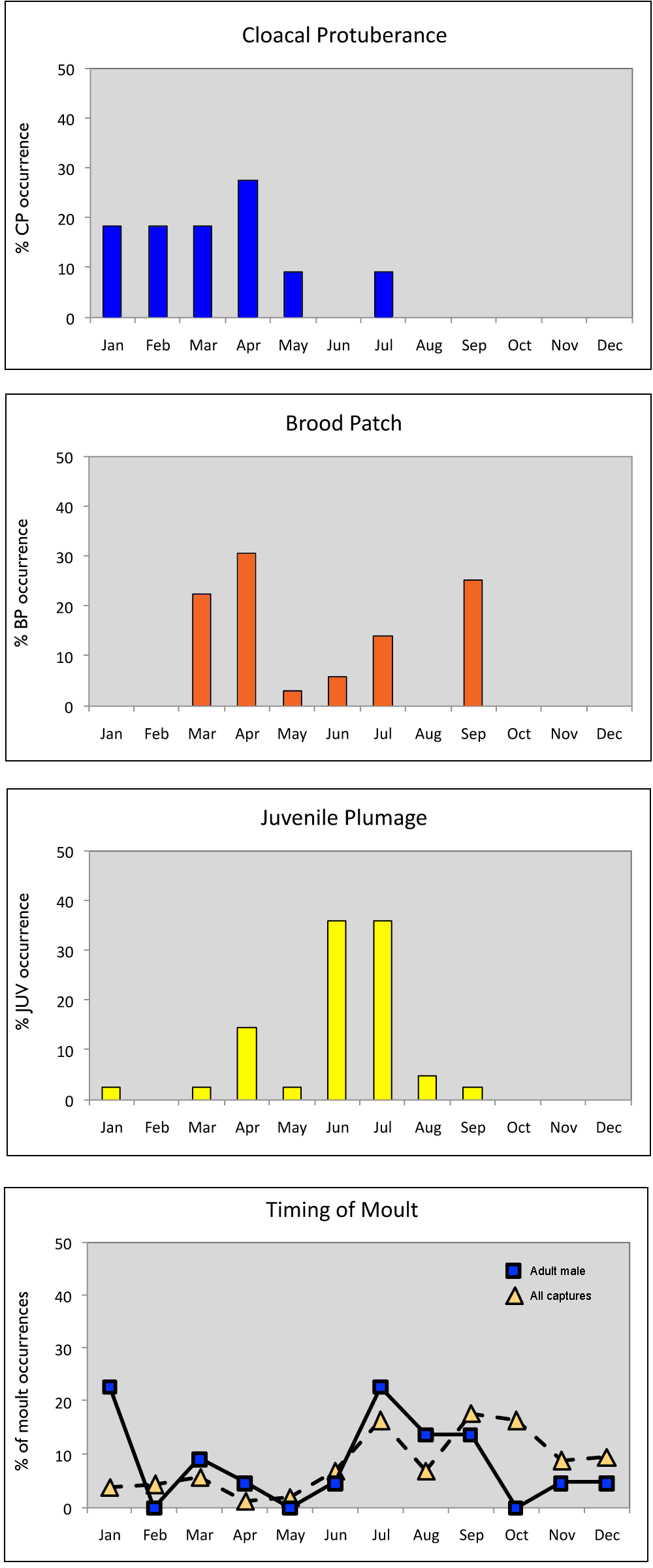 |
Comparisons:
For descriptions of moult pattterns in tropical Emberizidae and other families, see:
Pyle, P., A. McAndrews, P. Velez, R.L Wilkerson, R.B. Siegel and D.F. DeSante. 2004. Molt patterns and age and sex determination of selected southeastern Cuban landbirds. J. Field Ornithol. 75:136-145.
Ryder, T. B. and J.D. Wolfe. 2009. The current state of knowledge on molt and plumage sequences in selected Neotropical bird families: a review. Ornitologia Neotropical 20:1-18.

